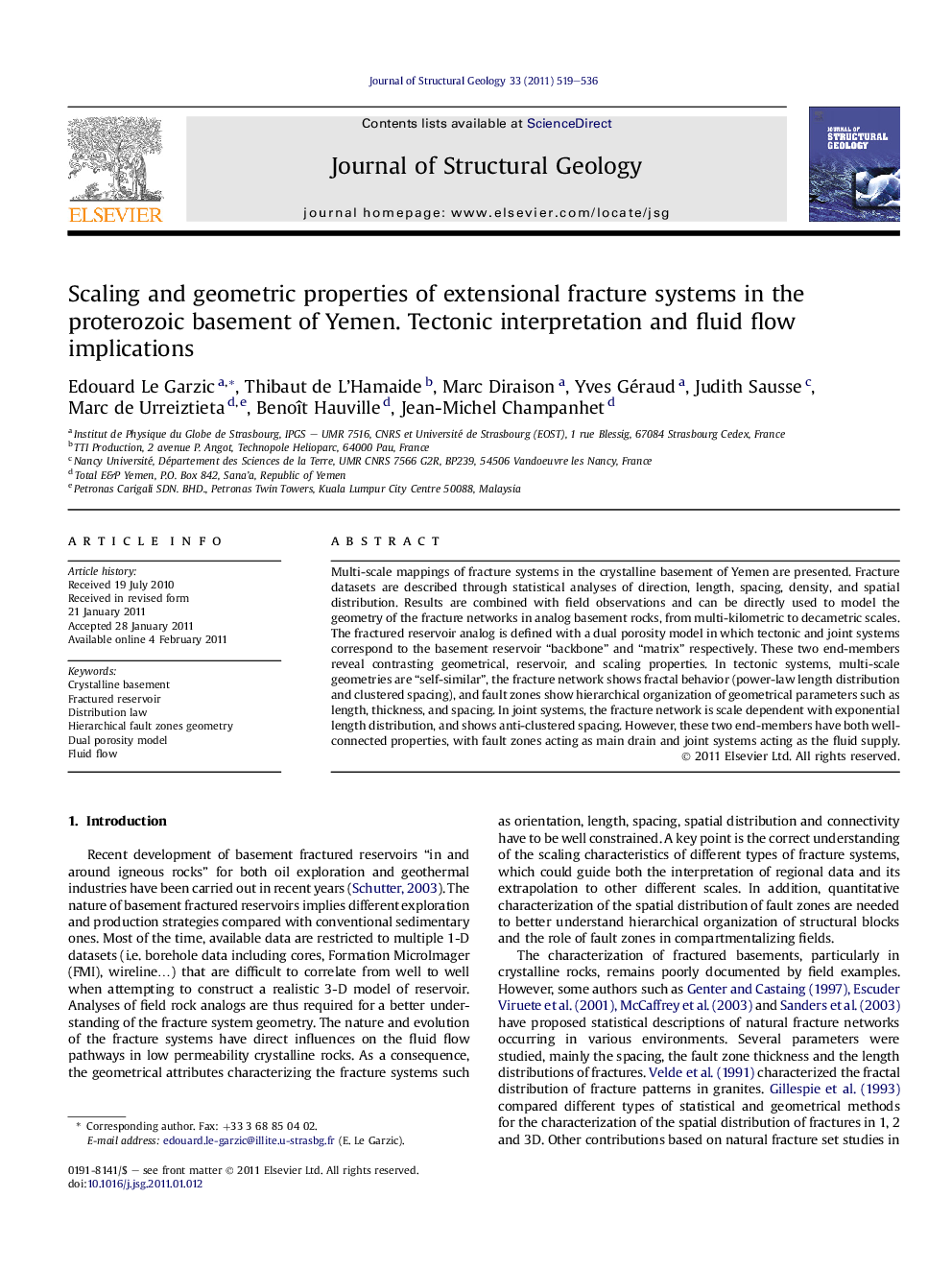| Article ID | Journal | Published Year | Pages | File Type |
|---|---|---|---|---|
| 4733369 | Journal of Structural Geology | 2011 | 18 Pages |
Multi-scale mappings of fracture systems in the crystalline basement of Yemen are presented. Fracture datasets are described through statistical analyses of direction, length, spacing, density, and spatial distribution. Results are combined with field observations and can be directly used to model the geometry of the fracture networks in analog basement rocks, from multi-kilometric to decametric scales. The fractured reservoir analog is defined with a dual porosity model in which tectonic and joint systems correspond to the basement reservoir “backbone” and “matrix” respectively. These two end-members reveal contrasting geometrical, reservoir, and scaling properties. In tectonic systems, multi-scale geometries are “self-similar”, the fracture network shows fractal behavior (power-law length distribution and clustered spacing), and fault zones show hierarchical organization of geometrical parameters such as length, thickness, and spacing. In joint systems, the fracture network is scale dependent with exponential length distribution, and shows anti-clustered spacing. However, these two end-members have both well-connected properties, with fault zones acting as main drain and joint systems acting as the fluid supply.
► Joints have negative exponential trace-length distribution and anti-clustered spacing. ► Extensional faults have power-law trace-length distribution and clustered spacing. ► Extensional fault systems present a “self-similar” geometry. ► Faults have a hierarchical organization of length, thickness, and spacing parameters. ► Basement fractured reservoir can be defined as a reservoir-scale dual porosity model.
